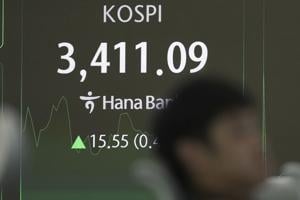Asian shares displayed a mixed performance on Monday, following a week where Wall Street closed near record highs. Hong Kong’s Hang Seng Index increased by 0.1%, reaching 26,421.63 points. In contrast, the Shanghai Composite Index fell slightly, down 0.1% to 3,866.37. Concerns regarding the Chinese economy persist, as analysts suggest that recent data does not sufficiently indicate robust growth, particularly in light of challenges posed by U.S. trade policies.
Analysts from ING Economics highlighted that “China’s economy continued to slide in August, with all key activity readings falling short of market forecasts once more.” Lynn Song, an economist at the firm, noted that the recent slowdown raises the possibility for additional short-term stimulus measures from Beijing. Retail sales in China grew by just 3.4% in August, marking the slowest growth rate since November of the previous year, and a decline from 5.7% in July and 6.8% in June.
The shifting dynamics of the Chinese economy have been impacted substantially by U.S. tariffs. Stephen Innes, managing partner at SPI Asset Management, remarked, “For years, Beijing leaned on exports as the carry trade that kept growth rolling even as property cracked. But with Trump’s tariffs slicing through supply chains, that leg of the trade is gone.” Such sentiments underscore the complexity of the current economic landscape in China.
In Australia, the S&P/ASX 200 index declined by nearly 0.2%, closing at 8,851.70. Conversely, South Korea’s Kospi Index rose by 0.4%, settling at 3,408.54. Notably, stock trading was suspended in Japan due to a national holiday.
Wall Street had a mixed close on Friday, with the S&P 500 slipping by less than 0.1% from its recent all-time high. The Dow Jones Industrial Average fell by 273 points, or 0.6%, while the Nasdaq composite managed a modest gain of 0.4%. The recent fluctuations on Wall Street are largely attributed to expectations surrounding the Federal Reserve’s upcoming meeting, where a potential interest rate cut will be discussed. The S&P 500 eventually settled at 6,584.29, while the Dow closed at 45,834.22, and the Nasdaq composite concluded at 22,141.10.
In the bond market, the yield on the 10-year Treasury bond rebounded slightly, rising to 4.06% from 4.01% late Thursday.
Oil prices experienced a slight increase, with benchmark U.S. crude rising by 37 cents to $63.06 a barrel. The international standard, Brent crude, also saw gains, adding 36 cents to reach $67.35 a barrel. In currency markets, the U.S. dollar inched up to 147.67 Japanese yen, while the euro remained stable at $1.1732.
The global economic landscape continues to evolve, influenced by both domestic and international factors. The interplay of these elements will be monitored closely in the coming weeks as markets adjust to both economic indicators and geopolitical developments.






































































